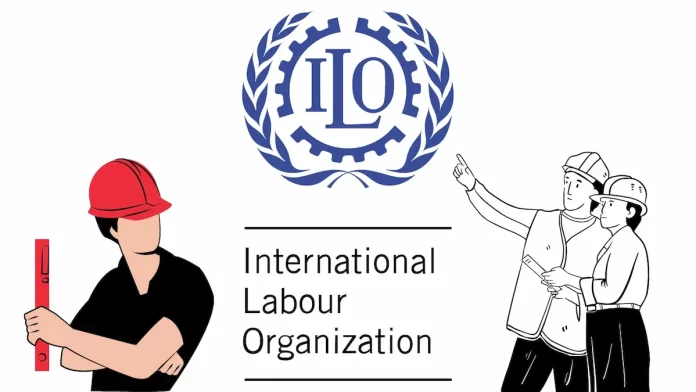The International Labour Organization (ILO) has been at the forefront of global efforts to address labor-related issues, ensuring decent work for all and protecting the rights of workers, particularly the most vulnerable.
Among the ILO’s significant contributions are Conventions 138 and 182, which specifically target child labor.
These conventions represent a commitment to eradicating child labor practices worldwide and securing a brighter future for children.
This article provides a factual overview of these crucial international instruments and their impact.
Convention 138: Minimum Age for Admission to Employment
Convention 138, formally known as the “Minimum Age Convention, 1973,” sets a framework for establishing the minimum age at which children can enter the workforce.
Adopted on June 26, 1973, it has been ratified by 171 member countries as of my last knowledge update in January 2022.
Key Provisions:
- General Principle: Convention 138 establishes the general principle that children under the age of 15 should not be allowed to work, except for light work that is not harmful to their health or development.
- Hazardous Work: The convention also stipulates that children under 18 should not engage in work that is likely to be harmful to their health, safety, or morals.
- Scope: It allows countries to set a minimum age for entry into more hazardous forms of work based on national conditions, provided the age is not less than 18.
- Development of Adolescents: The convention recognizes the importance of vocational guidance, training, and other measures to ensure the development of adolescents.
Convention 182: Worst Forms of Child Labour
Convention 182, titled “Worst Forms of Child Labour Convention, 1999,” focuses on eliminating the most egregious and harmful forms of child labor. It was adopted on June 17, 1999, and has been ratified by 186 member countries as of my last knowledge update.
Key Provisions:
- Definition: Convention 182 defines the worst forms of child labor, which include slavery, forced labor, trafficking, child soldiering, and work that is harmful to the health, safety, or morals of children.
- Immediate Action: It calls on member states to take immediate and effective measures to secure the prohibition and elimination of these worst forms of child labor.
- Special Attention: The convention acknowledges that certain groups of children, such as girls and children from marginalized communities, are at greater risk and should receive special attention.
- Education and Rehabilitation: Member states are required to ensure that children removed from the worst forms of child labor have access to education and vocational training, as well as appropriate rehabilitation and social integration services.
Impact and Significance
- Global Commitment: Conventions 138 and 182 represent a global commitment to ending child labor in all its forms. These instruments have been widely ratified, demonstrating the international community’s resolve to protect the rights of children.
- National Legislation: Ratifying countries are expected to align their national legislation with the provisions of these conventions, thus creating legal frameworks for the protection of children’s rights.
- Data Collection: ILO’s efforts to combat child labor involve collecting data and reporting on progress. These conventions contribute to the collection of data on child labor practices globally.
- Awareness and Advocacy: These conventions have raised awareness about child labor and prompted advocacy efforts at national and international levels to combat child exploitation.
- Government and Civil Society Collaboration: Effective implementation of these conventions often requires collaboration between governments, civil society organizations, and international bodies, promoting coordinated efforts to eradicate child labor.
Challenges and Future Directions
- Implementation Gaps: While the conventions have made significant progress in addressing child labor, challenges persist, including difficulties in enforcement, lack of resources, and a need for capacity-building in many countries.
- Changing Dynamics: The nature of child labor is evolving, with new challenges arising from issues like migration, supply chains, and digital platforms. Efforts must adapt to address these changing dynamics.
- Multisectoral Approach: Effective strategies to combat child labor require a multisectoral approach involving labor, education, social services, and law enforcement agencies.
- Education and Poverty: Addressing the root causes of child labor, such as poverty and lack of access to quality education, remains a critical challenge.
- Global Supply Chains: Ensuring that products in global supply chains are free from child labor is an ongoing challenge and requires the cooperation of businesses, governments, and civil society.
India’s Position
India’s position with regard to Conventions 138 and 182 of the International Labour Organization has been marked by a constructive approach to child labor issues.
While India has ratified Convention 182, it has not ratified Convention 138. The decision not to ratify Convention 138 is primarily based on India’s belief that a higher minimum working age, as stipulated by the convention (15 years), may not be practical or suitable for the country’s socio-economic conditions.
India’s labor laws, including the Child Labour (Prohibition and Regulation) Amendment Act, 2016, set the minimum working age at 14 years, with certain exceptions in non-hazardous work.
India’s approach aims to balance the need to eliminate child labor with the economic and social realities of millions of underprivileged families who may depend on child labor for their livelihood.
India’s stance on these conventions reflects its commitment to child welfare while considering the complexities of its large and diverse population.
Conclusion
Conventions 138 and 182 of the International Labour Organization are vital instruments in the global effort to eradicate child labor and protect the rights of children.
They set international standards, influence national legislation, and mobilize governments, civil society, and the private sector to work collaboratively toward this goal.
While significant progress has been made, challenges persist, and the fight against child labor continues, emphasizing the importance of sustained international commitment and cooperation.
The implementation of these conventions serves as a beacon of hope, demonstrating that a world where every child can enjoy their childhood and access education is not only possible but imperative.
